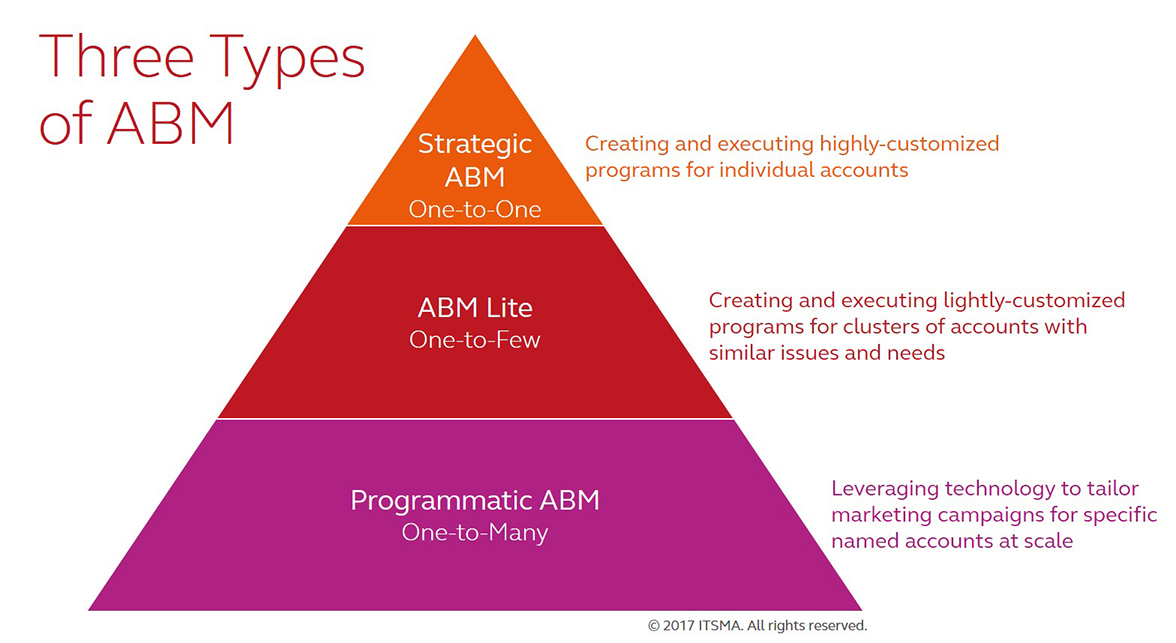B2B marketing is changing, with more and more B2B marketers shifting to targeted and personalised approaches – emulating B2C tactics and focusing on solving the buyer’s requirements rather than purely promoting standard products and services. Dave Munn discusses The Three Rs of strategic marketing: Reputation, Relationships and Revenue, drawing details from his topical book which explores insight-led ABM.
The recent rise of account-based marketing (ABM) puts customer insight front and centre, as it well should. As B2B companies shift from broadcast promotion to narrowcast campaigns with specific, named accounts, deep customer insight (driven by enriched data sources) enables individualised value propositions that hone in on the most important objectives of those target accounts.
Taking a customer-centric approach to marketing shouldn’t be anything new, of course. But the unfortunate reality in B2B is that inside-out, ‘push what’s on the shelf” approaches have long predominated.
Account-based marketing flips the standard script. Pioneered by ITSMA in the early 2000s, ABM emphasises creating customised marketing programs for individual accounts and treating them as ‘markets of one’. The focus is on solving the buyer’s most important business problems rather than promoting standard products and services.
This outside-in approach requires a real investment in leveraging data, gaining insight and developing an understanding of clients with enough depth to design and promote solutions that meet their most important business objectives.
Historically, leading technology and business services companies such as Accenture, IBM, KPMG and SAP have developed ABM programs just for their most important accounts. They assigned experienced marketing staff to dig deep into those accounts, and spend the time required to create fully customised campaigns.
Given the great potential of their largest accounts, it’s not surprising that the early ABM-ers could spend weeks or even months researching their targets to understand such strategic questions as:
- How is the account responding to shifting business, economic and competitive dynamics?
- What are the major business, IT and operational initiatives going on inside the account?
- Who are the key stakeholders that own specific initiatives and how do they work within the organisation?
- What are the decision-making criteria for key initiatives and how can we best address them?
- How does our firm stack up against the competition in the eyes of the key stakeholders and how might we improve our position?
Answering these questions is a prerequisite for designing truly personalised marketing campaigns.
Done right, ABM generates substantial business results in a variety of situations, including acquiring new customers, cross-selling and up-selling with existing customers and winning competitive bids.
Indeed, ITSMA’s latest benchmark study shows that 87% of B2B marketers running ABM programs say it delivers higher return on investment (ROI) than traditional marketing initiatives. Large majorities report similarly that ABM drives measurable improvement in ‘the three R’s’ of strategic marketing: Reputation, Relationships and Revenue (source: ITSMA and ABM Leadership Alliance, Optimizing Investments in Account-Based Marketing Survey, 2017).
Today, leveraging insight to support more personalised and account-based initiatives is no longer an option and no longer just for your top accounts. The reality is that B2B buyers at every level tune out all but the most relevant marketing messages and content.
But the great challenge with ABM today is implementing it at scale while continuing to create personalised, customised programs for accounts with widely different needs, different vendor ecosystems, different buying criteria and different perceptions of your business and capabilities.
Three types of ABM
The growing demand for ABM has led companies to develop and implement three distinct types: Strategic ABM, ABM Lite and Programmatic ABM. While the principles remain the same across the three types, including client-centric and insight-led campaigns, the particulars vary.

Strategic ABM: Creating and executing highly-customised marketing plans for individual accounts.
This original one-to-one approach is typically reserved for a company’s most strategic accounts. With this approach, a senior-level marketer works directly with one or a few key account teams on the sales side and crafts fully customised programs for each individual account as an integral part of the overall account plan.
Research and insight is done on the account level, often including both secondary and primary research, including hands-on workshops with senior sales people, delivery executives and representatives from the clients themselves. Internal and public databases can help, but it’s often a largely manual process.
ABM Lite: Creating and executing lightly-customised programs for clusters of accounts with similar issues and needs.
This one-to-few model is typically applied to small groups of key and second-tier customers and prospects (e.g. top ten automakers or regional commercial banks). Marketers identify shared strategic concerns, identify key stakeholders and craft narrowly tailored campaigns with a light degree of personalisation.
Research and insight is conducted with small groups of accounts that share similar business attributes and initiatives with a combination of manual deep dive and secondary sources of data.
Programmatic ABM: Leveraging technology to tailor marketing campaigns for specific named accounts at scale.
This one-to-many approach focuses on using technology to personalise and customise marketing messages, content and interactions with hundreds or even thousands of targeted accounts based on criteria such as account industry, size, purchase intent and online behaviour.
Research and insight is largely programmed and automated, with tools for tracking, analysis and recommendations to guide personalisation and engagement.
Insight-led ABM and Adobe’s segmented approach
Like many B2B organisations, Adobe began its ABM journey in 2013, with a one-to-one approach with a small number of its most strategic accounts. The goal was to transition from a traditional, product-focused marketing and sales approach to a more customer-centric strategy based on integrated business solutions. Account-level research provided an insight-based approach for each account.
At the core of Adobe’s approach was a cross-organisational, enterprise-wide team that was devoted to the customer’s success. The team included representatives from product development, marketing and sales, systems integration, customer support and training groups, as well as financial and legal counsel. Adobe supported customers with a single account manager who was responsible for leveraging the combined efforts of all Adobe resources to maximise the success that the customer could achieve with Adobe solutions.
As the program achieved success with top accounts, Adobe gradually expanded its scope and now covers hundreds of accounts with a full complement of 100+ marketing activities, ranging from 1-to-1 engagements, to 1-to-few vehicles, to 1-to-many programs. Research and insight remain at the heart of the program, but with a much greater use of automated reporting, analytics, testing and continuous improvement to optimise results at every level.
By 2016, the expanded ABM program had generated significant improvements in sales, market share and customer satisfaction, including:
- 20% increase in solutions per customer
- 20% increase in customer satisfaction
- 30% increase in share of wallet
Overall, the program generated a remarkable 1,400% increase in revenue from targeted accounts during a three-year period.
Interested in a deeper dive? Check out our new book, A Practitioner’s Guide to Account-Based Marketing: Accelerating Growth in Strategic Accounts.
Have an opinion on this article? Please join in the discussion: the GMA is a community of data driven marketers and YOUR opinion counts.
Read also:
The power of data – data may be the new oil, but it’s only valuable if you have a reliable engine
How data drives 5 key steps to maximising account-based growth







Leave your thoughts